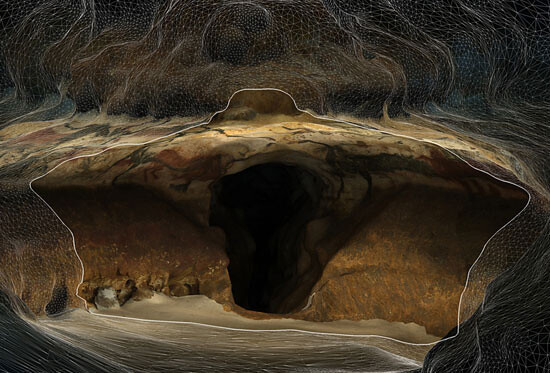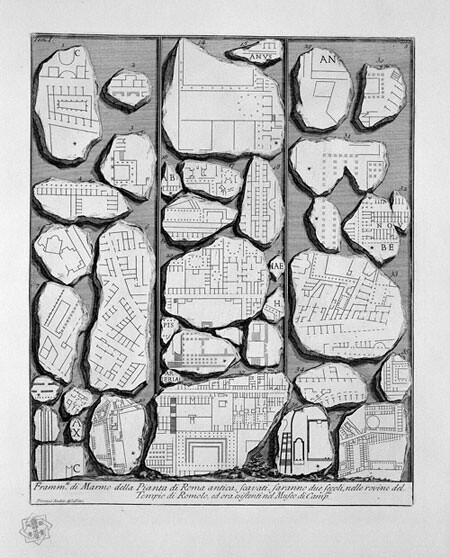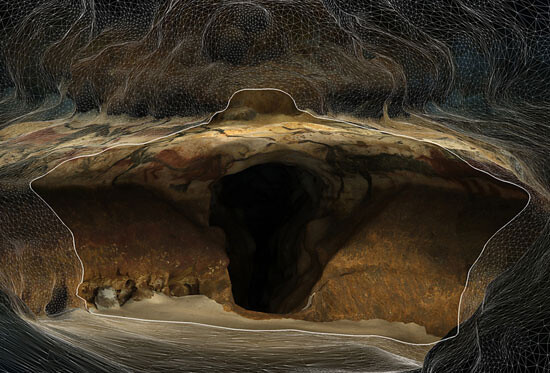Even if we are to resign ourselves to thinking of artworks as produced by structural or economic conditions, we end up bumping into a larger problem of having a hard time locating the way structural or economic conditions actually work today. Maybe we are still inside the long historical tail of institutional critique trying to identify coercive structures when actually most of the institutions have already been defunded. Or maybe it’s a new formal regime altogether, amplifying Lippard’s pronouncement that conceptualism dematerialized art’s formal language in favor of time-based systems and ephemeral events.1 The material support, so to speak, became information. Only now we are dealing with a situation where the ephemerality of abstract concepts has become monstrous in its capacity to absorb financial values and meaning effects alike into a confusing soup of affective or speculative projections. And these effects decide the status and the fate of not only art objects, but entire cities, countries, and economies in a way that is difficult to describe or represent, and yet relies almost primarily on visibility and spectacle in order to transmit its information across the long distances of the planet. Under a regime of visibility that usurps older notions of substance, what figures can we use to affirm its surface effects, to understand its refractive powers, to crack open its hidden energies and make its calculus work for us and not against us? How has this new superficiality realized and flipped the politics of spectacle described by Debord? And why should we take a closer look at the sun?
In its time, the dematerialization of art carried a liberating spin—freedom from objects can be easily understood in idealist terms as a freedom from the burdensome worldly interests that surround material things, from scarcity and economic value. And of course critics of the way Lippard’s claims have been inherited are always quick to point out how the art establishment had to then fetishize and archive the material artifacts of conceptual works, essentially stuffing the Idea back into its material support for an indexical historical record that restores the status quo of exhibiting objects as such. And while this is usually thought to show the conservatism of an art establishment with the market always in mind, it also offers a crucial instance where physical material and abstract information are shown to rely upon each other mutually. Yes, the works needed a material base in order to be catalogued, historicized, remembered, and sold, but they also needed a material artifact in order to be visible in the first place, whether as object or as information.


Now, for some time, information has been central to not only the development and distribution of artworks, but to their visibility as such. And the questions opened up by Lippard and conceptual artists in the early days of the information-based economy should not be understood as a happier road not taken in the development of a utopian, fully abstract artwork, but rather as the beginning of a road that has since been taken all the way to the end. The museums that preserved the artifacts of conceptual works, and the galleries that sold them, knew very well that the material support of conceptual artworks, or immaterial ideas for that matter, are what makes them part of a global economy in which their visibility decides whether they exist in the first place. The question of visibility has become so important that notions of information or materiality become subordinate to the point of irrelevance. But it may be useful to rescue them in order to understand how an economy of visibility necessarily adjusts the status of material or information to suit its purposes in often paradoxical ways, by appearing to privilege their optical, emotive, or sexy qualities over, and often as, their substantial characteristics. We might say that we now function so purely in the realm of the idea that any substance becomes ephemeral regardless of whether it is art or not.2 Heavy and light material come to be married by a logistical calculus concerned primarily with the amount of energy they can mobilize and release.3 Or it becomes a matter of mood. Do you like it? Do you feel it to be heavy or light?
Today it seems almost impossible to reconcile the output of two forms of labor: one that arrests working bodies in space and time over the long term—over days, weeks, years, lifetimes, and generations—and another that takes place in an instant, in the time it takes for a camera shutter to snap or for a commercial spot to be shot and broadcast in all directions to project an instant of work across the earth. We are still trying to figure out how capital pools around commodities that can be copied and distributed at no cost. The models for doing so only become more fleeting as audiences become more vast and unpredictable. Interns exchange free labor for knowledge. But then someone like Eric Glatt, a former AIG employee who turned into a labor activist after being fired from AIG and taking on an internship as an accountant, put it eloquently: “I can’t tell my landlord to give me free rent so he can gain experience as a landlord.”4 But a sharing economy booster might say that Glatt could have posted his apartment on Airbnb and turned a profit to subsidize his internship, essentially gluing together multiple extractive enterprises into a tangle that might look ethical or at least feel fair-ish. The distributed sharing economy now seems to show us that the property speculation that broke the markets in 2007–08 was actually no small matter at all, but actually a profound antimatter made out of regimes of visuality and visibility that are so sophisticated that we need technologies developed in the contemporary arts to untangle the meshing of their symbolic, informational, and economic values. And of course the contemporary arts are at the same time bound up in that same tangle.


Bubble Rubble
Take Rotterdam for instance, which after 2007 found a massive volume of its office spaces empty due to a sagging economy—around 600,000 square meters, which is really a lot for a small city like Rotterdam.5 It’s a problem in general for the Netherlands, but while a city like Amsterdam stopped its municipal building projects, Rotterdam accelerated construction with the idea that increased building activity would provide an economic stimulant. It was basically building more buildings for fewer people. The great example is Rem Koolhaas’s De Rotterdam building, which was designed in 1998 but languished until construction began finally in 2009, actually at a moment when the market collapse lowered the cost of construction materials, making it possible for the developers to begin the 160,000 m2 building (apparently the largest in Europe).6 The municipality basically guaranteed the developers full occupancy for ten years, so the city uses its pull to get businesses and tenants into the building, effectively guaranteeing rent so that the developers can cover their costs. And the city gets its trophy for its skyline.
Faced with a slumping economy, the city invested in building its image and its landscape. This is the logic of speculation: you simply trade a fleeting material for a blueprint, a disappointment for a promise. You trade depression for a fantasy. Decay for a dream. Depression into flash and glimmer. A dead end for a vision. Defeat for spectacle. But what they are actually building are buildings for no people. They are future ruins. They’re still being built, but they’ve already come down. This is where we can begin to discern a very crucial characteristic of property speculation in which two timescales of future vision and material reality merge in a peculiar way, mashing desire with the laws of gravity to produce material anachronisms frozen in space. When the difference between building and destroying disappears, we enter into a totally different sort of timescale in which you basically have to live through birth and death simultaneously, and over and over again, as if they are the same.7 Or, consider Reza Negarestani’s convincing description of decay as “positioning itself on the substratum of survival, in order to indefinitely postpone death and absolute disappearance. In decay, the being survives by blurring into other beings, without losing all its ontological registers. In no way does decay wipe out or terminate; on the contrary it keeps alive.”8


With all this in mind it becomes interesting to revisit Guy Debord’s 1967 The Society of the Spectacle, his treatise on mass visuality as collective desire, on spectacle as a kind of negative commons that affirms surface and appearance at the expense of substance—in particular, its passages on the way spectacle rearranges the status of life and death: “Even a ‘youth-capital,’ contrived for each and all and put to the most mediocre uses, could never acquire the durable and cumulative reality of financial capital. This social absence of death is identical to the social absence of life.”9 For Debord, the abstraction machine of spectacle was the very site of alienation and of the severing of labor from the source of that labor, the worker. And of course he was right—that’s what spectacle is and that’s what it does. But we have come a long way since then. And it hasn’t gotten any better, just more interesting. Even Debord recognized that the forms of vision deployed by spectacle are not to be underestimated as belonging only to some dreamy imaginary. In fact they become concrete very quickly. As Debord puts it, “The spectacle cannot be understood as an abuse of the world of vision, as a product of the techniques of mass dissemination of images. It is, rather, a Weltanschauung which has become actual, materially translated. It is a world vision which has become objectified.”10
This material translation of a world of vision is where Debord’s description of spectacle begins to sound similar to the self-fulfilling prophecies of financial speculation, where projections of value produce value, essentially through feeling, through a vague form of calculation called emotion, unscientific and imprecise. The dictionary defines speculation as “the forming of a theory or conjecture without firm evidence.”11 As David Graeber has written, “unmoored from any legal or community constraints, [financial speculation] was capable of producing results that seemed to verge on insanity.”12 Speculation is a form of vision that produces a figure without a ground.13 But crucially, within the sphere of capital it is a form of vision produced by desire, and it is according to this vision that those desires sculpt goods and commodities by way of wacky predestination. But to see only commodities as the concretization of this sphere of optics would be to underestimate the profound effects of financial speculation on the basic forces that orient our very sense of being in the world.


Spectacular Survival
Socialists and classical conservatives who regret the loss of social security and stability in general often criticize the waves of deregulation that liquidated institutional structures on a massive scale.14 But what was the structure that went missing? Was it the welfare state, which Jan Myrdal, son of pioneering Swedish Social Democrats Gunnar and Alva Myrdal, celebrated when he glowingly described the lighting fixtures of his childhood social democratic paradise in ominously divinatory terms as casting “light without shadows”?15 Was it to be found in the Third Way economics of John Maynard Keynes, who was anyhow the first chairman of what was to become Arts Council England following World War II, and who used his influence to ensure that the funding body reported directly to the Treasury rather than to any ministry in order to keep art at “arm’s length” from government? Supposedly this was done to preclude attempts at turning artists into state propagandists and to preserve the artist’s innocence as a somewhat moronic flaneur-liberal floating through the ether who “walks where the breath of spirit blows him” and who “cannot be told his direction; he does not know it himself.”16
Whatever the socialist background of such a Keynesian approach to arts funding, Keynes’s very position as head of the Arts Council of Great Britain, as it was called at the time, was to anchor the objectivity of the funding body by distancing it from the state, but only by paradoxically placing it closer to capital, however public. It reflects a line of thinking that would take hold later, namely that capital freed from jurisdiction flows free of ideology. And his artist is nothing if not liberated, following the whims of wind and weather to the Abstract Expressionist canvas or megalomaniac space junk he deigns to dream up and submit to the council for dutiful approval or disproval based on its inherent merits and qualities, naturally.
But in the meantime many of the people who never related much to the nationalist or identitarian terms by which state structures became benefactors in the first place are quieter in their expressions of disdain. Immigrants and artists and deviants whose needs and desires were never reflected by the great society projected by even the healthiest welfare states knew instability before, just as they know it now. They were never really cared for that much, or they might have benefitted from the state not as citizens but as criminals extracting a benefit.17 And in some strange way their knowledge of the welfare state’s ebbs and flows has made many of them the exemplary survivors of its decay as much as its most expert navigators. And it seems likely that their shape-shifting adaptive abilities can now only shift from one parasitical register to another, only this time constitutive and definitive. Many people complain that there are no longer any courageous or radical artistic positions anymore, but at the same time, basically anyone who commits themselves in some capacity to art—and, for that matter, many who don’t—is subject to a condition so precarious that they have to direct every single fiber of their being into generating the entrepreneurial gestures that guarantee their survival. Is this not radical? Yes, it doesn’t register in any kind of public sphere or collective administrative or governmental grand project, but that is very simply because its medium is the borderline between life and death. We now have to speculate just to survive. Maybe we always did.
In the insurance business they have something called a “negative externality,” which describes how the consequences or cost of a decision could compromise its foundation and render it inefficient and thus without utility. It is often used in environmental and climate change discourse to describe the mitigation costs of pollution. It is the deathlike waste product that comes out the other end. It is what scares off investors. It is the anger of the people or the blizzard that no one saw coming. The negative externality is the perpetually unstable and unknowable thing that insurance and social welfare alike exist to anticipate and buffer against. It is the exteriority that never goes away no matter what because it is always by definition beyond calculus and control. Instability by definition defers to these externalities and uses technologies of insurance to account for them.
Here it is interesting to note Foucault’s fascination, only a few years after May 1968 in France, with US neoliberalism, most notably in his reading of the Chicago School neoliberal economist Gary Becker in his seminars at the Collège de France in 1978–79.18 Noting the tendency among US neoliberals to apply the logic of economic calculus to pretty much everything, Foucault goes on to defend the role of economists as providing a solution for developing a theory of human behavior outside of legal or moral prescriptions capable of envisioning a new kind of liberty.19 Key for Foucault was the distinction between Marxian abstract labor and the neoliberal redefinition of abstract labor in relation to classical economics. According to Foucault, the neoliberal view has it that it is not actually capital that abstracts labor but Marxian classical economic theory itself that cannot grasp a certain value that escapes quantification and rationalization due to the unstable factor of time, which cannot be fixed to labor.20 The interesting thing here is that capital is never really understood to reconcile this instability, but rather refracts onto all of the factors outside of government or regulation that can’t really be stabilized by anyone anyhow.


Solar Capital
But if the unfixed and unquantifiable, abstract aspects of value take over, what becomes of capital? Or rather, what does capital become? Unstable finance-based economies and information networks alike have taught us that it becomes a matter of whims and flights of fancy, of emotional projection, sentiment, hallucination, refractive surfaces, and illusions, of the sublimation of life and death into a symbolic order that supersedes organic processes. And meanwhile, geopolitical forces have for some time rearranged themselves not around ideological boundaries, but around organic sources of energy: in oil, gas, mineral deposits. Just as abstraction converts matter into spectacle and back, it repurposes power in a political sense as energy in the sense of electricity. Instability preys upon and simultaneously intensifies life forces, merging the function of fuel and capital. The present role of governments as economic managers may in fact mark a transition to being managers, or rather hoarders, of vital energies and life forces that merge the applications of adrenaline-fueled software, knowledge, or image production with the harvesting of fuel sources from the earth, oceans, and atmosphere. What, then, is the supreme life force, the source of all energy for organic life? It is the sun.21 This must have been what Michel Serres had in mind when he wrote that “the real, ultimate capital is the sun.”22


Serres points to a master regime of capital that emerges when the money system gives way to energy.23 And while green economy enthusiasts might think of this as a positive step in which capital starts to assume cozy and warm naturalistic qualities, a more interesting approach might still reside in the question of who defends this capital and who opposes it. The sun is the cosmic dictator of this energetic regime, the material and structural limit we cannot cross, and the king that would need to be killed in order to claim a life and death not pegged to its light. As Reza Negarestani has written, “The idea of ecological emancipation must be divorced from the simultaneously vitalistic and necrocratic relationship between the Earth and the Sun.”24 But this is clearly a radical proposition—arguably even more than to kill God, which is an idea with a symbolic and mythical hold over life. But to kill the sun would seem to be a matter of utter self-annihilation, as it is, quite literally, the source of our own life. Donna Haraway has a very interesting passage in her Cyborg Manifesto where she suggests that the sun is not only the source for organic life, but also the substance of a postindustrial communication and exchange that exceeds and exhausts the capacities of people. For Haraway, sunshine is even responsible for artificial life:
Our best machines are made of sunshine; they are all light and clean because they are nothing but signals, electromagnetic waves, a section of a spectrum, and these machines are eminently portable, mobile—a matter of immense human pain in Detroit and Singapore. People are nowhere near so fluid, being both material and opaque. Cyborgs are ether, quintessence.25
But actually one of the most crucial contributions to the insurrection of the sun was in fact Kazimir Malevich’s own black square painting, the zero point and foundation of geometrical abstraction, coming six decades previous to Lippard’s dematerialization. And while the material of the painting is dated by art historians to having been put on a canvas in 1915, in fact Malevich designated the origin of the painting as 1913, the year the black square first appeared as part of the opera Victory Over the Sun, for which, as set designer, Malevich collaborated with composer Mikhail Matyushkin and poet Aleksey Kruchenykh. The opera told of the sun’s capture from the sky as a hegemonic timekeeper controlling the passage from night to day and the formatting of time. To defeat the sun and bury it in the earth would break its stranglehold over time and release a broader consciousness of nonlinear time, informed by the writings of P. D. Ouspensky and Charles Howard Hinton on fourth-dimensional time where past and present blur together and become a matter of perception. As El Lissitzky wrote in 1923: “the sun as the expression of old world energy is torn down from the heavens by modern man, who by virtue of his technological superiority creates his own energy source.”
Malevich’s black square was the sign of this eclipse, a pure negation of the sun’s power and an image of the void that would replace it. Crucially though, the negativity of this void was meant to signal the courage of utterly destroying the symbolic power of an existing order, and the megalomaniac thrill of the chaos that would come after it. Following Serres, we can see Malevich’s black square as an anticapitalist position fully resigned to the consequences of the collapse of the dominant order. The question today is really whether we need this courage to destroy the order, or to simply deal with the fact that it has already crumbled.
See Lucy Lippard, Six Years: The Dematerialization of the Art Object from 1966 to 1972 (New York: Praeger, 1973).
See Joshua Simon’s Neomaterialism book or Maria Lind’s “Abstract Possible” exhibition. Also see Dieter Roelstraete’s excellent essay on lightness and heft in artworks →.
Consider Timothy Mitchell’s comparison between the logistical demands of oil and coal. As oil can be transported by water, it is more difficult to interrupt its flows between nodes than in the case of coal, which due to its weight must be transported by fixed rail line. See Timothy Mitchell, Carbon Democracy (London: Verso, 2011), 36–39.
Glatt interned with the production crew of the film The Black Swan, directed by Darren Aronofsky, about a schizophrenic ballerina →.
See →.
See →.
See the extensive work of Eyal Weizman and Forensic Architecture.
Reza Negarestani, Cyclonopedia (Victoria: re.press, 2008), 182.
Guy Debord, The Society of the Spectacle, trans. Fredy Perlman and John Supak (Detroit: Black & Red, 1977), 160. “The spectator’s consciousness, immobilized in the falsified center of the movement of its world, no longer experiences its life as a passage toward self-realization and toward death. One who has renounced using his life can no longer admit his death. Life insurance advertisements suggest merely that he is guilty of dying without ensuring the regularity of the system after this economic loss; and the advertisement of the American way of death insists on his capacity to maintain in this encounter the greatest possible number of appearances of life. On all other fronts of the advertising onslaught, it is strictly forbidden to grow old. Even a ‘youth-capital,’ contrived for each and all and put to the most mediocre uses, could never acquire the durable and cumulative reality of financial capital. This social absence of death is identical to the social absence of life.”
Debord, “Separation Perfected,” no. 5 in The Society of the Spectacle.
“Speculation,” New Oxford American Dictionary on my laptop.
David Graeber, Debt: The First 5,000 Years (Brooklyn: Melville House, 2011), 341.
See Hito Steyerl’s “In Free Fall: A Thought Experiment on Vertical Perspective,” at →.
There is already an accepted geopolitical and economic lineage in place to explain how we got to where we are, and it is not necessary to go too deeply into the continuum that stretches from Ayn Rand to Milton Friedman and the Chicago School to fiat currency and Bretton Woods to the 1973 oil crisis to Thatcher and Reagan and Deng Xiaoping to perestroika and 1989. It is also a bit misleading for having been assembled as a right-wing conspiracy convenient for sealing off all hope for a melancholic and impotent left that prefers all the heroic dramaturgy of fist-pumping denouncement to the darker arts of actual liberalism.
Thanks to Annika Eriksson for pointing this out to me. As quoted by Gertrud Sandqvist here → Original source: Uno Ahrén, Gunnar Asplund, Wolter Gahn, Sven Markelius, Gregor Paulsson, and Eskil Sundahl, acceptera (accept) Manifesto on Modern Architecture, Stockholm, 1931; reprinted 1980.
John Maynard Keynes, The Collected Writings of John Maynard Keynes, Vol. 28, ed. D. Moggridge (London: Macmillan Press, 1982), 368. In the same volume Keynes also wrote, “If with state aid the material frame can be constructed, the public and the artists will do the rest between them. The muses will emerge from their dusty haunts, and supply and demand shall be their servants.” Quoted in → and →.
As Fred Moten and Stefano Harney describe the relation of today’s student to the university: “The Only Possibly Relationship to the University Today Is a Criminal One,” in The Undercommons: Fugitive Planning and Black Study (Brooklyn: Minor Composition, 2013), 26–30.
See Michel Foucault, The Birth of Biopolitics: Lectures at the Collège de France, 1978–1979 (New York: Palgrave Macmillan, 2008), 215–233, 239–261.
See →.
In a conversation between François Ewald and Gary Becker at the University of Chicago →.
Thanks to Maria Lind for originally reminding me of solar energy.
Michel Serres, The Parasite (Baltimore: The Johns Hopkins University Press, 1982), 173. “The dam holds the water that comes from glaciers and from snow, from wind, clouds, heat, and cold. Coke, gas, or water power is stored heat in any case. A while back, the collection of capitals was converging on the rock made of signatures; these resources also head together toward one spot: the sun whence they come and to which they go. These reservoirs are only subsuns. Their source, far upstream, is the sun. The real, ultimate capital is the sun. Subcapitals are time functions, but our time is that of the sun. Our cosmological, astronomic, energetic, entropic, informational times, all cyclic and reversible, as well as the irreversible times of disorder and death, of life and order randomly invented—all of these intertwine in the sun. In matter of energy and of matter, only the sun creates and transforms. All kinds of materialism, and especially those that seek to account for real movement and its excess, join together with various energetics and perhaps idealisms here—they are, when all is said and done, all subcults of the sun.”
Also see Matteo Pasquinelli’s “The Contradiction of the Sun (and the Limits of a Molecular Revolt),” →.
Reza Negarestani, “Solar Inferno and the Earthbound Abyss” →.
Donna Haraway, “A Cyborg Manifesto: Science, Technology, and Socialist-Feminism in the Late Twentieth Century,” in Simians, Cyborgs and Women: The Reinvention of Nature (New York: Routledge, 1991), 153 →.
Category
Earlier versions of this essay appeared in IINN PPEERRPPEETTUUAALL PPRROODDUUCCTTIIOONN, a newspaper published as part of SOLO SHOW, an exhibition by Robbie Williams at e-flux in 2013. Many thanks to Natascha Sadr Haghighian, Hito Steyerl, Tom Holert, Maria Lind, Mariana Silva, Kaye Cain-Nielsen, and Amal Issa for their crucial input.


